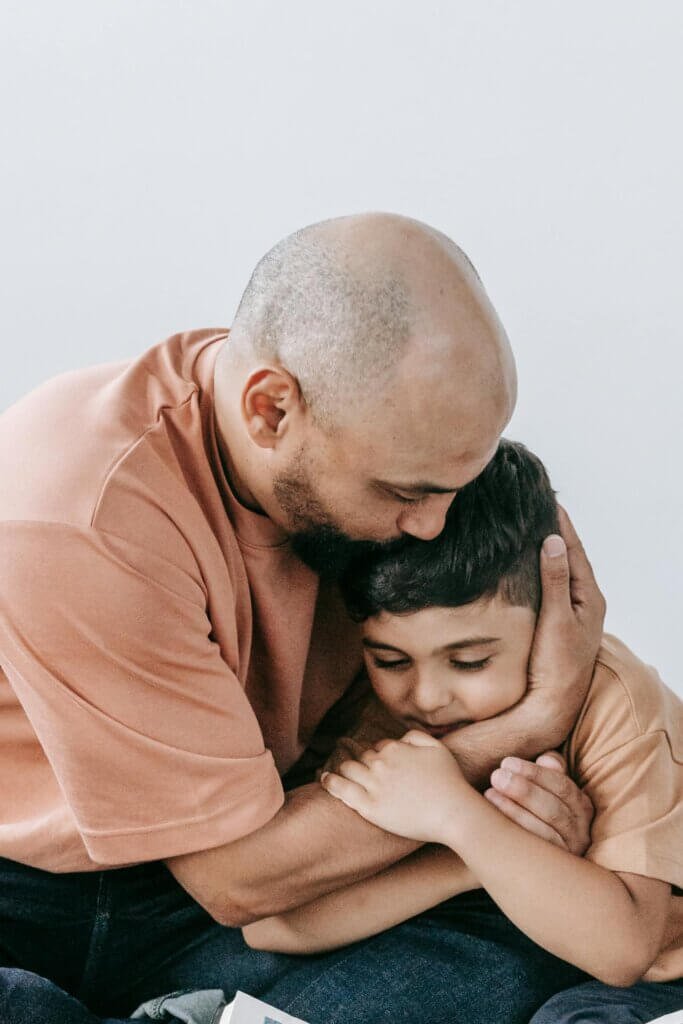
When people hear the word autism, they often picture a child struggling with speech or social interactions, but nonverbal autism remains widely misunderstood. Many assume that if someone can’t speak, they can’t think, feel, or understand the world around them. This misconception fuels stigma, exclusion, and missed opportunities for connection.
The truth? Nonverbal autistic individuals have rich inner lives, emotions, and intelligence, they just communicate differently. In this article, we’ll explore what nonverbal autism really means, debunk harmful myths, and discuss how society can become more inclusive.
What Nonverbal Autism Really Means

Defining Nonverbal Autism
Nonverbal autism refers to individuals on the autism spectrum who do not develop functional spoken language. But here’s the crucial point: lack of speech does not mean lack of understanding. Some may use a few words or sounds, while others remain entirely nonspeaking.
It’s also important to distinguish between:
- Nonverbal autism – Little to no spoken language.
- Minimally verbal autism – Limited speech (e.g., single words or short phrases).
- Nonspeaking autism – A broader term that includes those who may communicate through writing or AAC (Augmentative and Alternative Communication).
Causes and Neurological Factors

Why do some autistic individuals not speak? The reasons are complex and vary from person to person, but research points to several key factors:
- Motor planning difficulties (apraxia) – The brain struggles to coordinate mouth and speech movements.
- Sensory processing differences – Overwhelm from sounds, lights, or touch can make speaking difficult.
- Neurological variations – Brain connectivity differences may affect language development.
Studies, such as those from the National Institute of Mental Health (NIMH), suggest that these challenges are neurological, not behavioral.
How Nonverbal Autistic Individuals Communicate

Just because someone doesn’t speak doesn’t mean they’re silent. Many nonverbal autistic individuals use:
- AAC devices (tablets with speech-generating apps like Proloquo2Go).
- Sign language or picture cards (PECS – Picture Exchange Communication System).
- Typing or handwriting (some nonspeaking autistic adults write books and blogs!).
- Body language and behavior (facial expressions, gestures, or even leading someone to what they need).
The key takeaway? Communication is possible—it just looks different.
Debunking Common Misconceptions

Myth: “Nonverbal Means Low Intelligence”
This is one of the most damaging myths. Some of the most brilliant minds in history—like Temple Grandin and Albert Einstein—were likely on the autism spectrum. Many nonverbal autistic individuals have:
- Exceptional memory skills (remembering details most people forget).
- Advanced problem-solving abilities (figuring out complex systems).
- Deep emotional awareness (even if they can’t express it verbally).
Take Carly Fleischmann, a nonverbal autistic woman who typed, “I am autistic, but that is not who I am. Take the time to know me before you judge me.” Her story proves intelligence isn’t measured by speech.
Myth: “Lack of Speech Means No Emotions or Thoughts”
One of the most painful misconceptions is that nonspeaking individuals don’t experience deep feelings or complex thoughts. Nothing could be further from the truth.
The Reality:
- Emotional Depth: Many nonverbal autistic individuals feel emotions more intensely than neurotypical people. They may struggle to express joy, sadness, or frustration in expected ways, but that doesn’t mean they don’t experience them.
- Inner Dialogue: Just because someone doesn’t speak doesn’t mean their mind is silent. Many describe rich inner worlds—full of ideas, stories, and observations—that they simply can’t voice aloud.
- Creative Expression: Some express themselves through art, music, or writing. Consider Tito Mukhopadhyay, a nonverbal autistic poet who writes profound verses about his experiences.
What Research Shows:
A notable initiative is led by Dr. Alex Woolgar and Dr. Alyse Brown at the University of Cambridge, focusing on how nonspeaking autistic individuals process spoken language. Their work involves neuroimaging techniques to visualize and understand brain activity related to language comprehension in nonspeaking individuals. Learn more.
A Personal Perspective:
In a 2013 interview, Ido in Autismland, Ido Kedar (a nonverbal autistic author) emphasized that despite his inability to speak, he possesses a keen intellect and a rich inner life. He highlighted that many non-verbal autistic individuals are often misunderstood and underestimated, noting that they are “trapped in bodies that don’t obey our minds.” mind is always racing—with questions, stories, and feelings I can’t say out loud.”
Why This Myth Hurts:
- Leads to infantilization (treating nonverbal adults like children).
- Causes emotional neglect (assuming they don’t need comfort or companionship).
- Results in missed opportunities (not giving them education, jobs, or social inclusion).
How to Shift the Narrative:
- Presume competence – Always assume understanding.
- Look for alternative communication – Writing, typing, or art may reveal their thoughts.
- Validate their emotions – If they seem upset, acknowledge it even if they can’t explain why.
Myth: “Nonverbal Autism is Just a Phase”
Some parents hope their child will “grow out of” nonverbal autism, but the reality is more nuanced. While early intervention (like speech therapy) helps some develop language, others may never speak—and that’s okay.
Pushing for speech at all costs can be harmful. Instead, focusing on effective communication (whether through AAC, typing, or other methods) leads to better outcomes.
Myth: “All Nonverbal Individuals Are the Same”
Autism is a spectrum, meaning no two nonverbal autistic people are alike. Some might:
- Love music and art but struggle with math.
- Have hyperlexia (early reading ability) but find social interactions exhausting.
- Be sensory-seeking (craving deep pressure) or sensory-avoidant (hating loud noises).
Assuming all nonverbal autistic people have the same needs erases their individuality
The Impact of Stigma and How to Combat It

How Stigma Affects Nonverbal Autistic Individuals
Stigma doesn’t just hurt feelings—it leads to real-world exclusion:
- Schools may place nonverbal students in segregated classrooms, assuming they can’t learn.
- Employers overlook capable candidates because they don’t speak.
- Society often treats them as “less than,” leading to isolation.
This exclusion has lifelong consequences, from limited education to higher rates of depression.
Changing the Narrative: Advocacy and Representation
Thankfully, more autistic advocates are challenging stereotypes:
- Ido Kedar (nonspeaking author of Ido in Autismland).
- Amy Sequenzia (nonspeaking poet and activist).
- Organizations like ASAN (Autistic Self Advocacy Network) push for “Nothing About Us Without Us.”
Media representation is improving too—shows like Atypical and Love on the Spectrum help, but we need more authentic portrayals of nonverbal autism.
How Society Can Be More Inclusive
Inclusion isn’t just a buzzword, it’s action. Here’s how we can do better:
Schools: Train teachers in AAC, offer sensory-friendly spaces.
Workplaces: Hire based on skills, not speech.
Public spaces: Be patient and if someone doesn’t respond verbally, try another way to communicate.
These harmful assumptions persist partly because nonverbal autism is chronically understudied. As I’ve shown in my previous post, the lack of research funding and accessible tools fuels these misconceptions.
Supporting Nonverbal Autistic Individuals

For Parents and Caregivers
If your child is nonverbal:
- Explore AAC early, don’t wait for speech to “click.”
- Presume competence and always assume they understand, even if they can’t reply.
- Find community, groups like Communication First offer support.
For Educators and Therapists
- Avoid “quiet hands” policies, forcing stillness harms self-expression.
- Use visual supports—schedules, social stories, and choice boards help.
- Listen to autistic voices—therapy should empower, not force conformity.
For the General Public
Small changes make a big difference:
- Don’t ignore someone just because they don’t speak.
- Offer extra time—processing delays are common.
- Celebrate differences—autism isn’t a tragedy; it’s a different way of being.
A Call to See Differently

As I write these words, I think of my son, Ezra. My son’s silence is not an emptiness to be filled, it’s a language to be learned. At nine years old, he’s only spoken very few words, yet he speaks volumes in the way he carefully stacks his blocks, his laughter lights up rooms and whose tight hugs speak volumes. His autism isn’t the barrier, our inability to understand him is.
This is why we must shatter these myths with the urgency they demand:
Every time someone assumes Ezra doesn’t understand them because he doesn’t respond, they shrink his world. Every time a well-meaning relative says “maybe he’ll grow out of it,” they miss the brilliant child right in front of them. Every time a stranger gives us that pitying look in the grocery store, they reduce my son’s worth to his ability to perform speech.
But here’s the truth that keeps me awake at night and gets me out of bed each morning:
Not speaking is not the same as not thinking.
Not echoing words is not the same as not feeling.
Not communicating in typical ways is not the same as having nothing to say.
I’ve seen the lightning-fast understanding in Ezra’s eyes when I tell him we’re going to the park. I’ve felt the deliberate heart-felt eye contact when I’m sad. His mind is a vibrant, humming universe, we just need to learn how to listen without demanding he translate himself into our language.
A Closing Thought from the Heart

The revolution we need isn’t fancy technology or miracle cures (though AAC is a lifeline for many). It’s simpler and harder than that:
We need teachers who look beyond IEPs to see potential.
We need doctors who measure progress in connection, not just words.
We need strangers who offer smiles instead of stares.
We need a world that doesn’t just include nonverbal individuals, but values their unique ways of being.
Ezra may never say “I love you,” but when he reaches for my hug when he is not feeling well or giggles uncontrollably during tickle fights, the message is clearer than any words could be. My son isn’t broken, our understanding is.
So, I’m not asking for awareness. Awareness is passive. I’m demanding recognition, of the humanity in unconventional communication, of the intelligence in silence, of the personhood that exists beyond speech.
See my son.
See all the silent voices waiting to be heard.
Then help the world finally listen.
